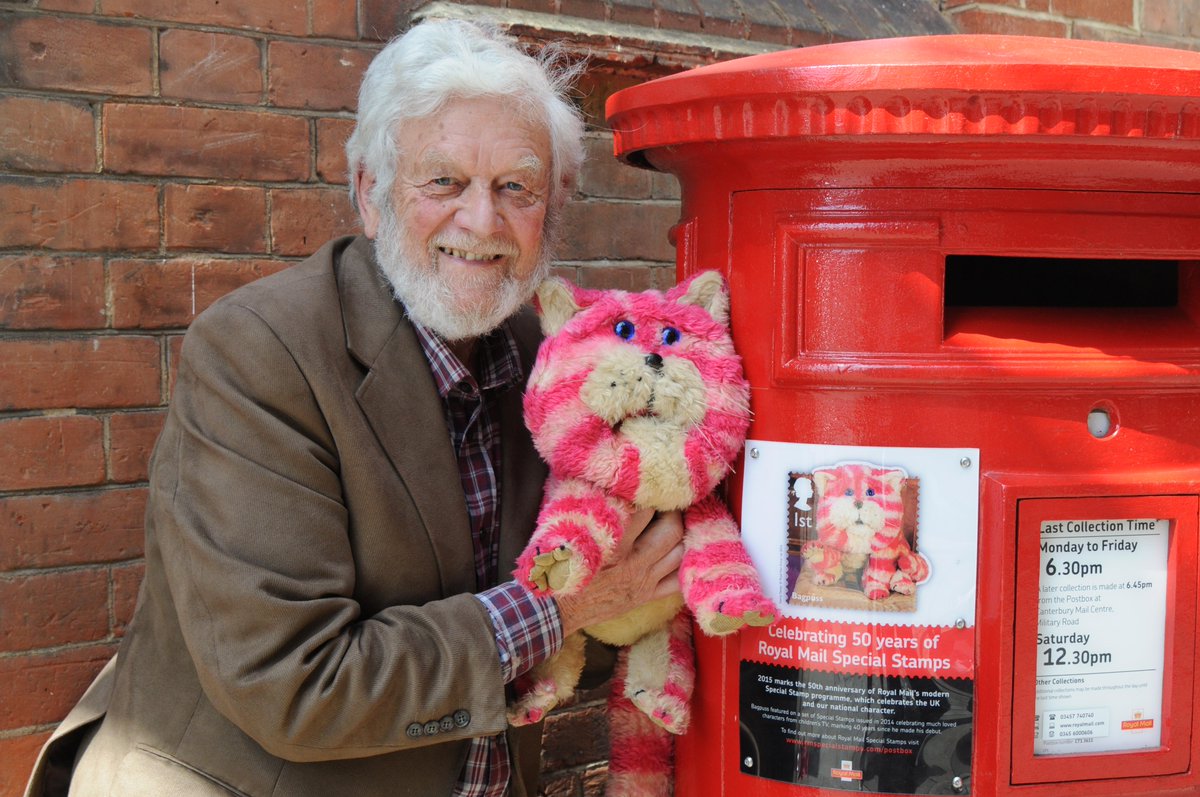 |
| 2012: Great British Fashion |
This was the set of stamps that immediately sprang to mind for this week's Sunday Stamps II theme, they are both a striking design and, more importantly for my short term memory, reasonably recent. They start out in 1945 with two designers that were famously linked with clothing the Queen, especially in the case of Hardy Amies (1909-2003) and his classic tailoring. Norman Hartnell also dressed the Queen Mother who I remember liked a flouncy style.
Fashion changed radically in the 1960s and designers chosen to represent this are John Pearce co-owner of Granny Takes a Trip who created this jacket from a Morris and Co furniture fabric and probably displayed it in his Chelsea boutique. In the middle is an outfit that is definitely 'swinging London' and created by Ozzie Clark with a print by his partner at the time the textile designer
Celia Birtwell. On the right is a suit made for Ringo Starr by Tommy Nutter who operated as Nutters of Saville Row.
Next we come to Jean Muir who is credited with breaking the barrier between couture and ready-to-wear and liked to call herself a dressmaker rather than a designer, and was described as making clothes that were "
both radical and classic". On the right is a creation by Zandra Rhodes who combines being a textile and fashion designer. The gold dress was borrowed from her personal collection for the fashion shoot but interestingly the 'fushia haired grand dame' has also put together a digital study collection of 500 couture dresses and drawings
here
Lastly is the distinctive Vivienne Westwood who continually changes her inspiration and styles here represented by the 1993 Harlequin dress when she was being influenced by Scottish tartans. In the middle is a name synonymous with the suit, Paul Smith. The Victoria and Albert Museum exhibited a retrospective of
Vivienne Westwood's work in 2004-5 and is currently showing a retrospective of the last designer featured in the set, the late Alexander McQueen entitled
A Savage Beauty.
About the Stamps:
The Norwegian fashion photographer Sølve Sundsbø was commissioned by the Graphic Design company Johnson Banks to photograph the chosen outfits which were obtained from both public and personal collections. He used live models to give the sense of movement and "
embody the ideal silhouette of the various fashion eras" and of course the models chosen would have to fit perfectly into the garments. The stamps were issued in sheets that consisted of a vertical strip of each design which as you can imagine was very striking at the post office counter.
Are you thinking Wot No Mary Quant?
Ah well she got her own stamp as part of the 2009 British Design Classics set photographed by Jason Tozer
An entry to Violet Sky's Sunday Stamps II theme - 'Stylish Clothing' - more dressing up
here



